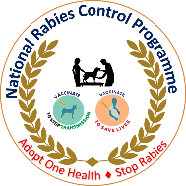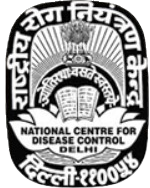Programme Strategies
The key strategic actions to achieve the objective of the human health component are as under:-
- To Ensure availability of Anti Rabies Vaccine (ARV) and Anti Rabies Serum (ARS) to all Animal Bite Victims at
all levels of health facilities
- To advocate the states for utilization of cost-effective Intra-dermal Rabies vaccines for Rabies Post Exposure Prophylaxis by organizing Sensitization workshops for stakeholders at national/ regional level for shifting IM to ID route – sensitization of health professional both in government and private sectors to routinely practice ID route instead of IM route for Rabies prophylaxis.
- Financial assistance to states from Centre through earmarking funds for ARV/ARS procurement in National Free Drugs Initiative scheme and inclusion of ARV/ARS in Essential drug list at all levels.
- Strengthening infrastructures for treating the victims of animal bites- by establishing Model Anti Rabies Clinics.
- Ensuring availability of trained manpower concerning appropriate animal bite management/ID inoculation/ ARS infiltration.
- Ensure uninterrupted supply of ARV/ARS and close monitoring ARV/ARS demand and supply positions to avoid stock out positions.
- Establishing monitoring mechanism for recording and reporting of Adverse Event Following Immunization (AEFI) for Rabies.
-
Capacity building of professionals in appropriate animal bite management
- Training of State, district and below District level health care professionals on program management aspects.
- Joint training of Health and Veterinary professionals on the operational aspect of the Rabies Elimination plan.
- Training on Surveillance of Animal Bites and Rabies Case investigations and Notification.
- Strengthening Surveillance of animal bites and Rabies cases in human.
- Ensuring implementation of Rabies notification in Human health sectors through the web portal for notification of animal bite victims/Rabies cases.
- Strengthening reporting system about animal bites and Rabies incidence through IDSP and IHIP.
- Resource mapping – mapping the facilities (State/ District wise) for management of Animal bite victims, Treatment facilities for suspected Rabies cases or Infectious Diseases hospitals and mapping of laboratories for Rabies diagnostic.
- Establishing Model Anti Rabies Clinics.
- To strengthen diagnostics capacity on Rabies:
- To identify and establish Rabies referral laboratories at the National, regional, and State level in the State government medical colleges, Infectious disease hospitals or tertiary care hospitals as per the need of the program. These labs will provide the recommended ante mortem and post mortem diagnostic facilities such as Directs Fluorescent Antibody test/ Sellers Stain/ Molecular Diagnosis by PCR and ELISA
- Training and capacity building of lab professionals (National / State level Training workshop) by periodic and hands-on training on Rabies diagnostics.
- Information Education and communication (IEC) for increasing awareness about the diseases and the importance of
seeking timely and appropriate treatment for animal bites
- Development of IEC material for undertaking IEC activities (Print/ Electronic material- audio visual spots for a mass media campaign).
- Framing of definitive IEC Strategy/ guidelines for the identified target audience (Health professional/ Veterinary professionals/ Children-school health education / Community or field workers (ASHA/ ANMs and Paravets/ General Community/ Media.
- Including IEC especially in school





Objectives:
The helpline will consist of a team of well-trained agents (Graduate and above) working on inbound and outbound processes, supervised by a Team lead. These agents will be continuously updated with crucial information required to full fill objectives of helpline.
Helpline provides a cloud-based Ticketing system with the features like- generate and resolve tickets, track complete life cycle of the ticket, Real time monitoring & tracking of the ticket, SMS notification to Caller on the ticket status, sharing of Geo location of the vaccination centers. It will also have customized reports with the real time dashboard and Data analytics to understand the pattern. An advanced auto dialer system will be implemented to auto-assign incoming calls to available agents. Helpline also has Quality control mechanism to ensure call quality and appropriate information sharing.
All queries on Rabies prevention and control will be handled by a 16*7 dedicated Rabies helpline, with a dedicated number (15400).
Same helpline also handles queries on snakebite.
Presently this helpline will serve five states: Andhra Pradesh, Madhya Pradesh, Assam, Puducherry, and Delhi.